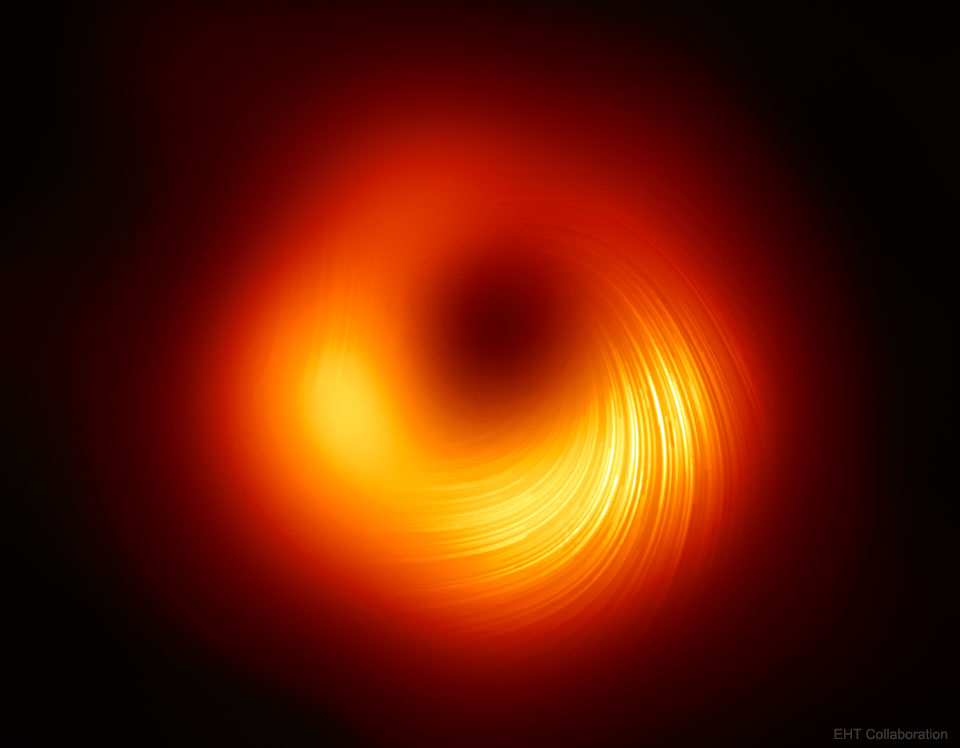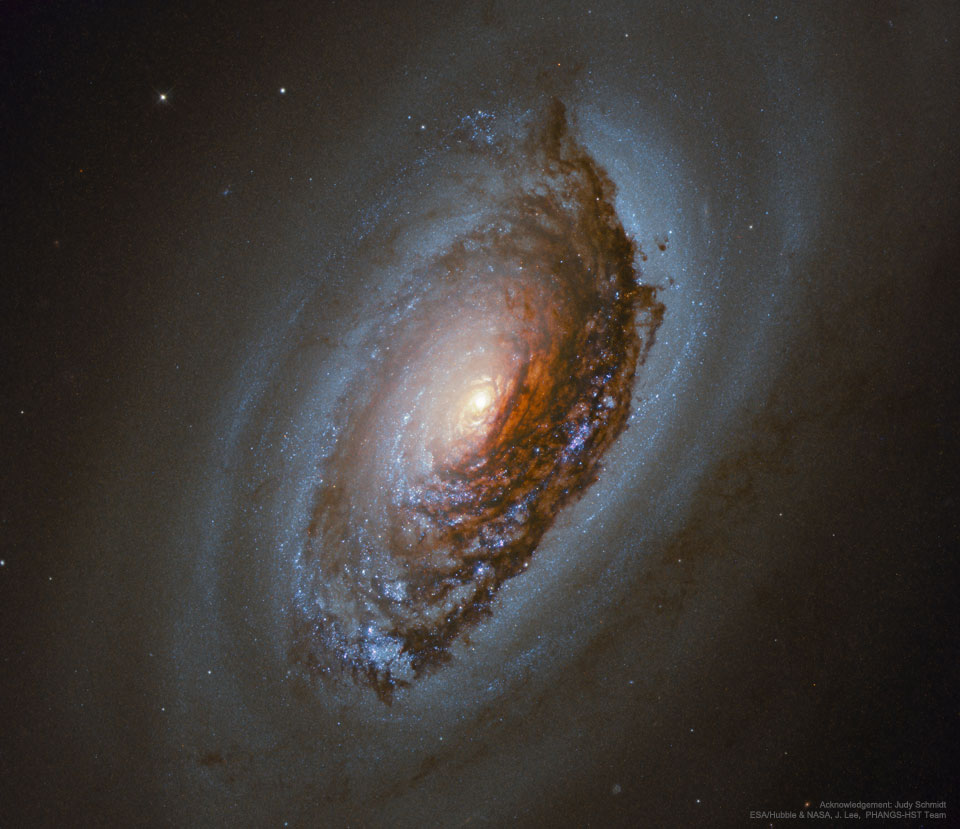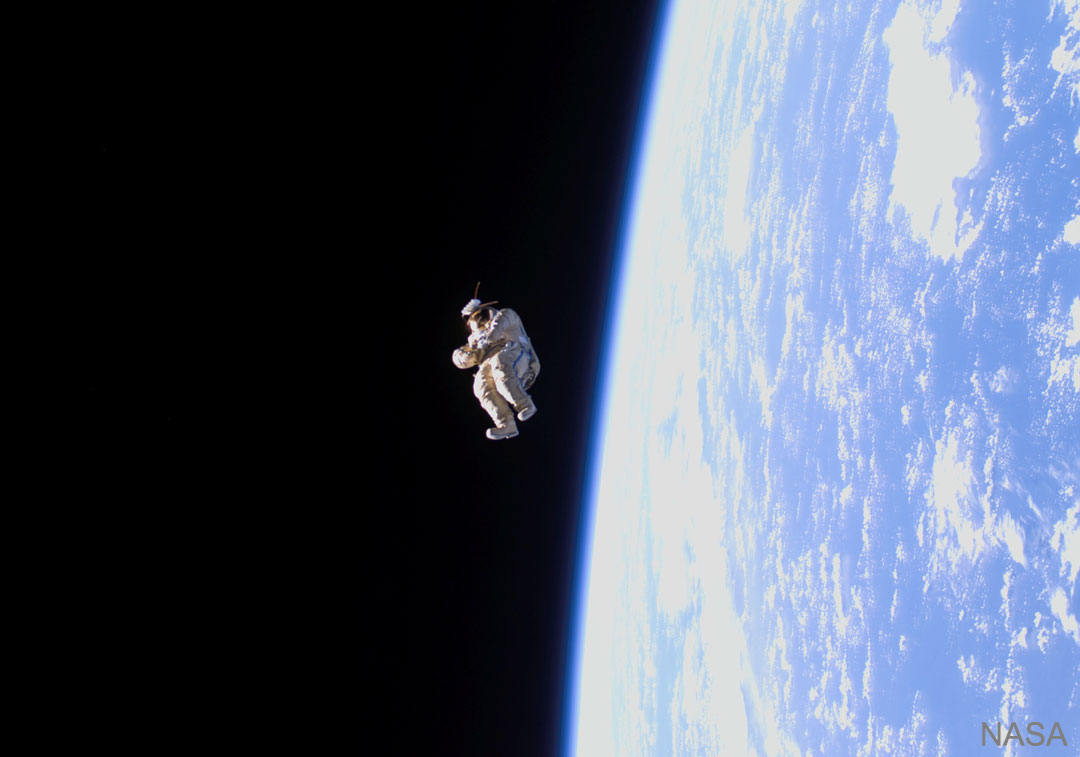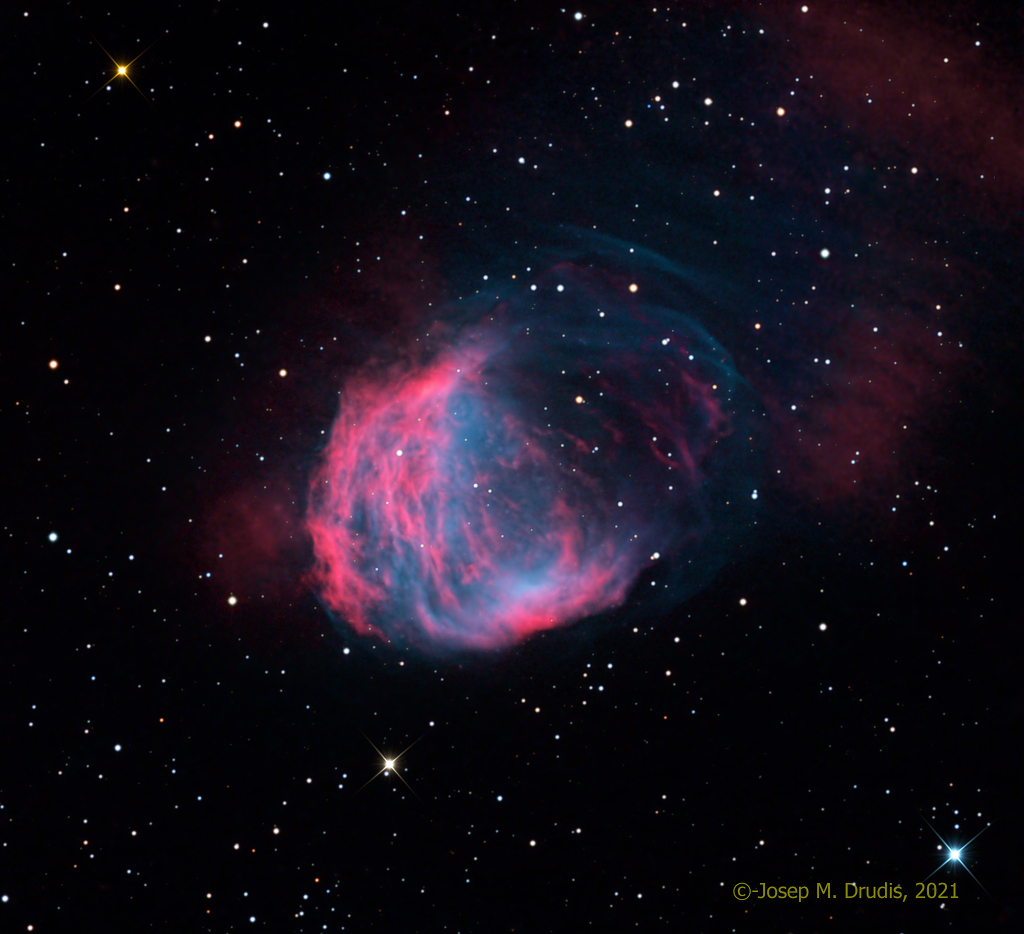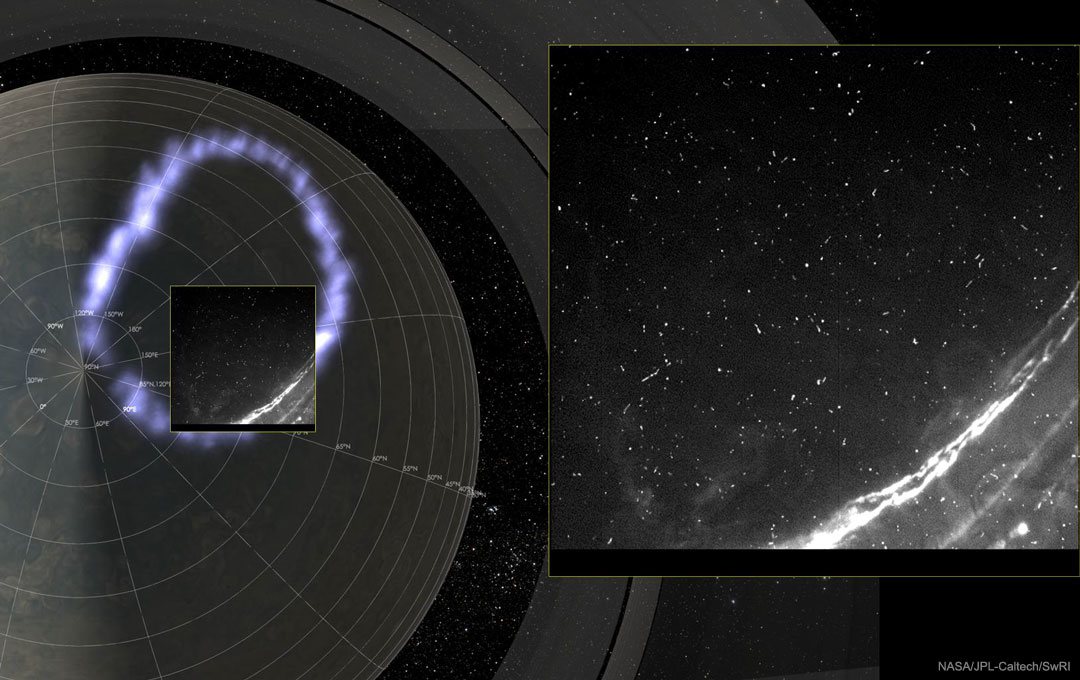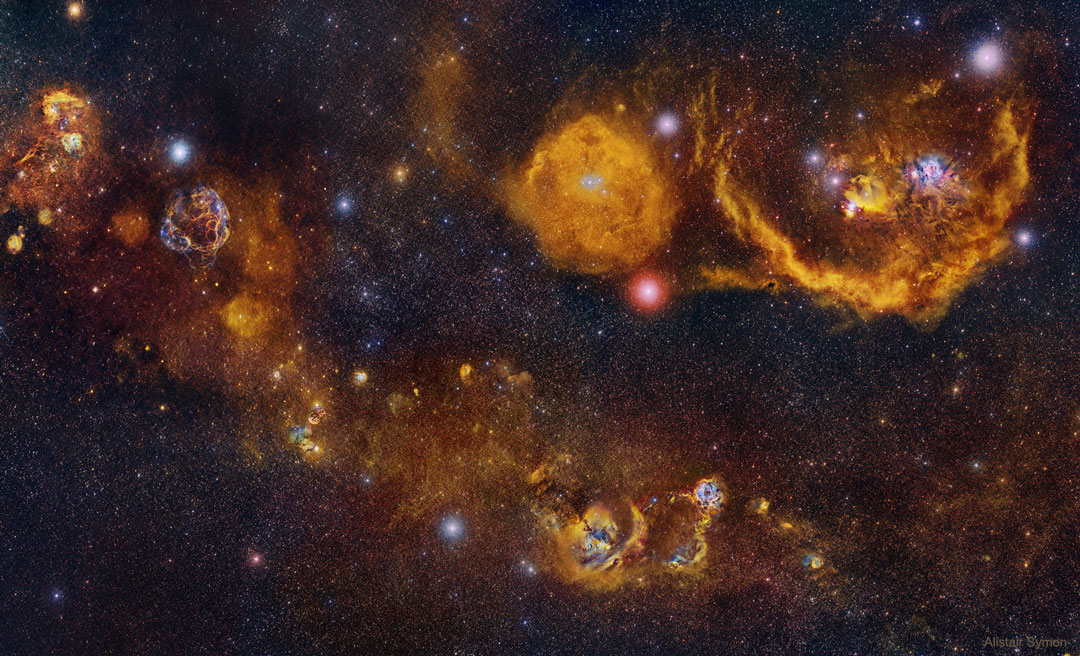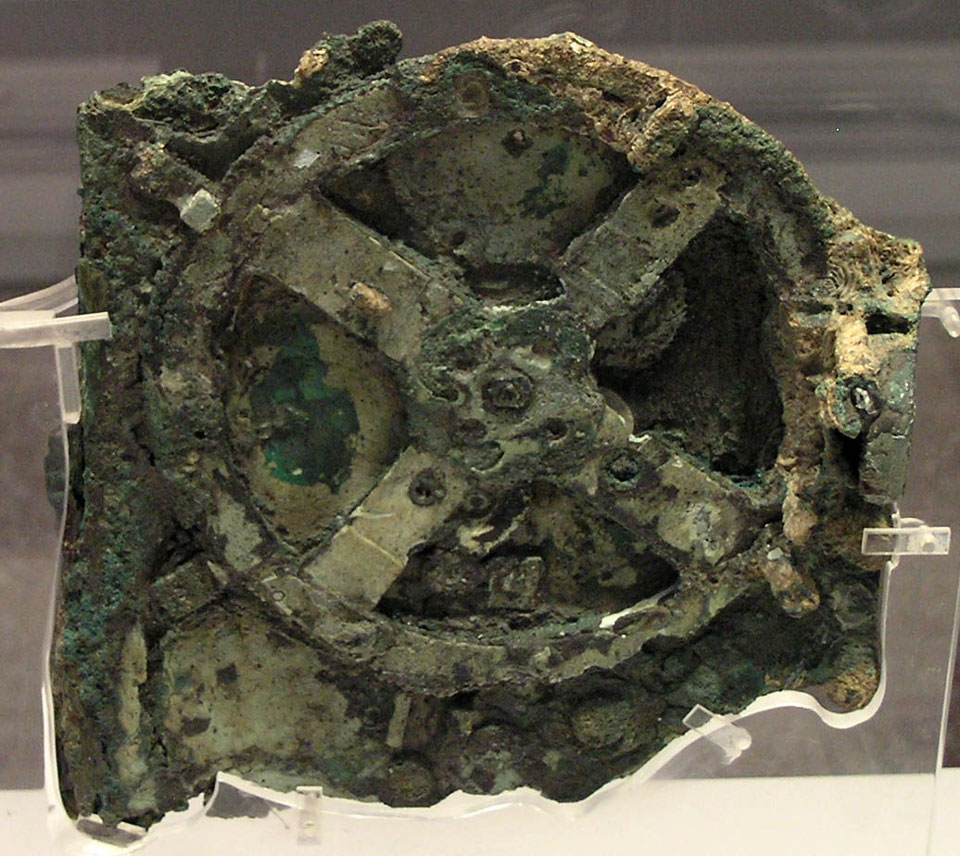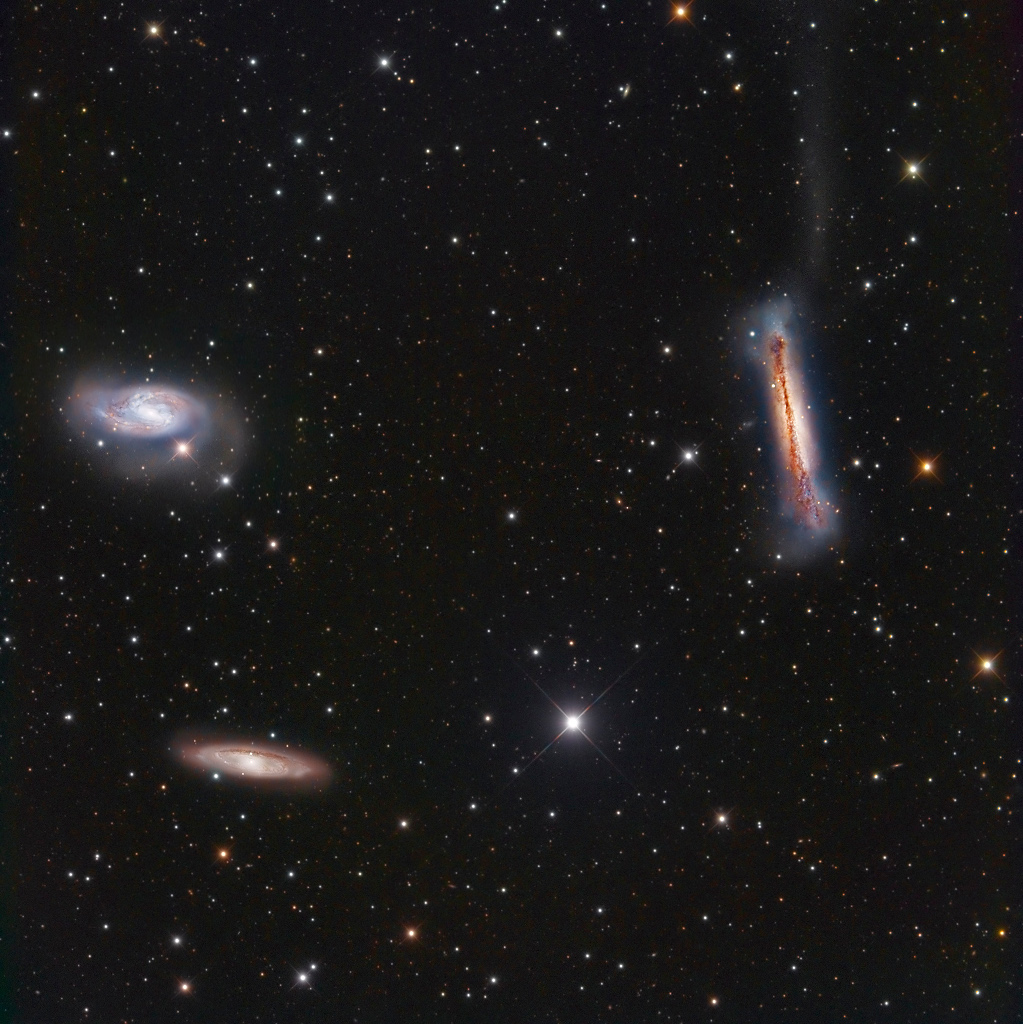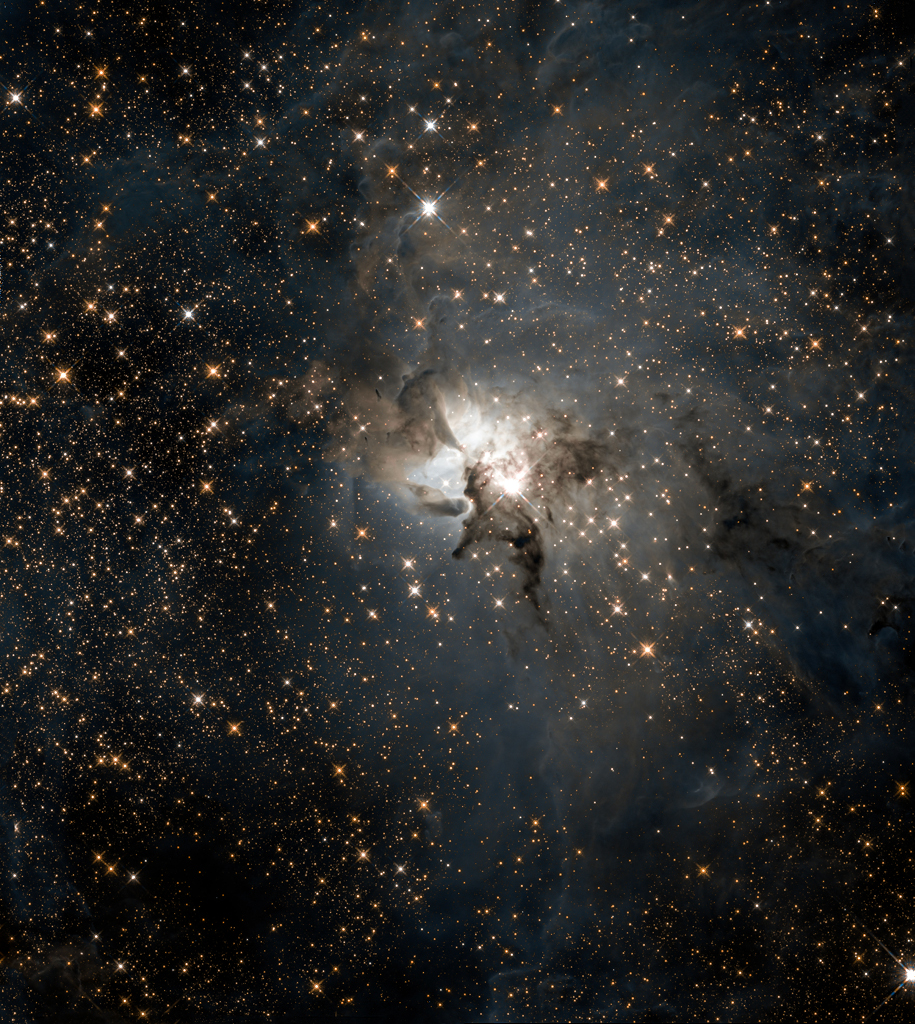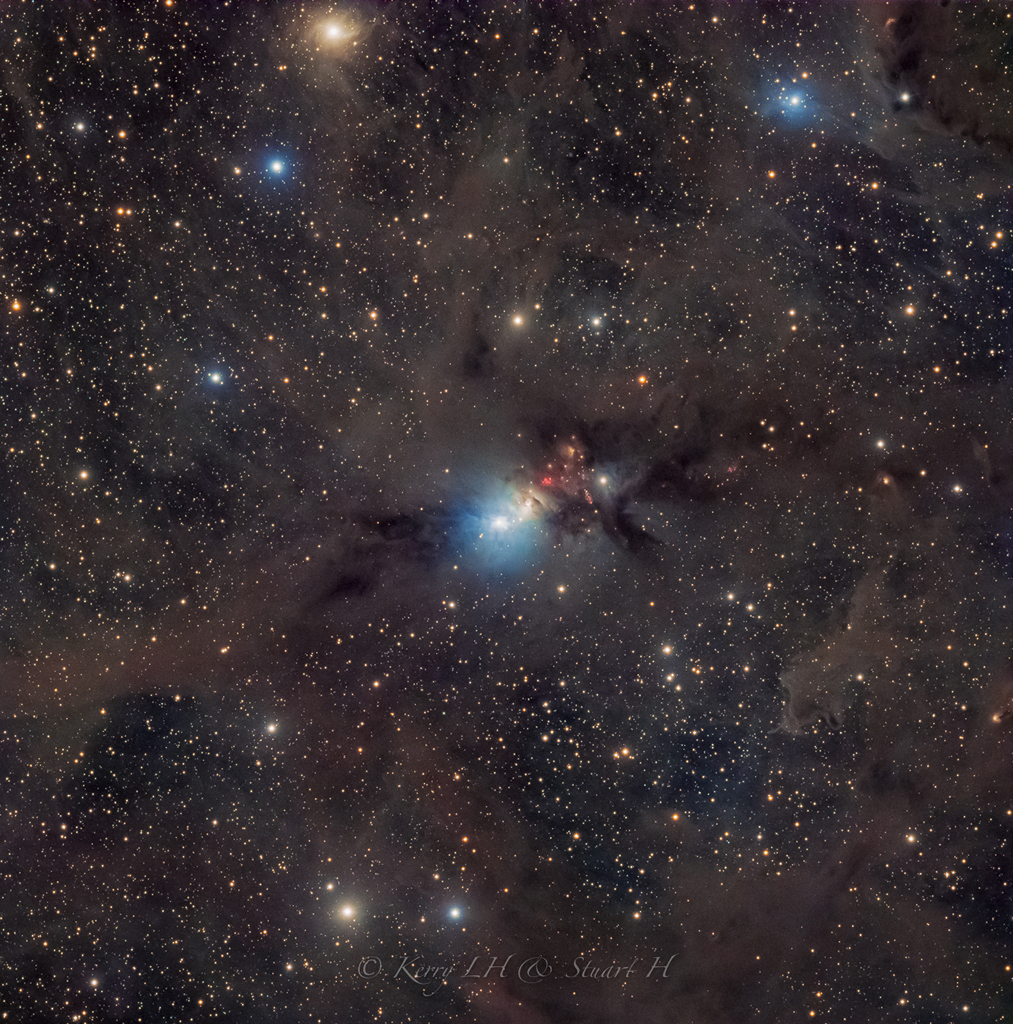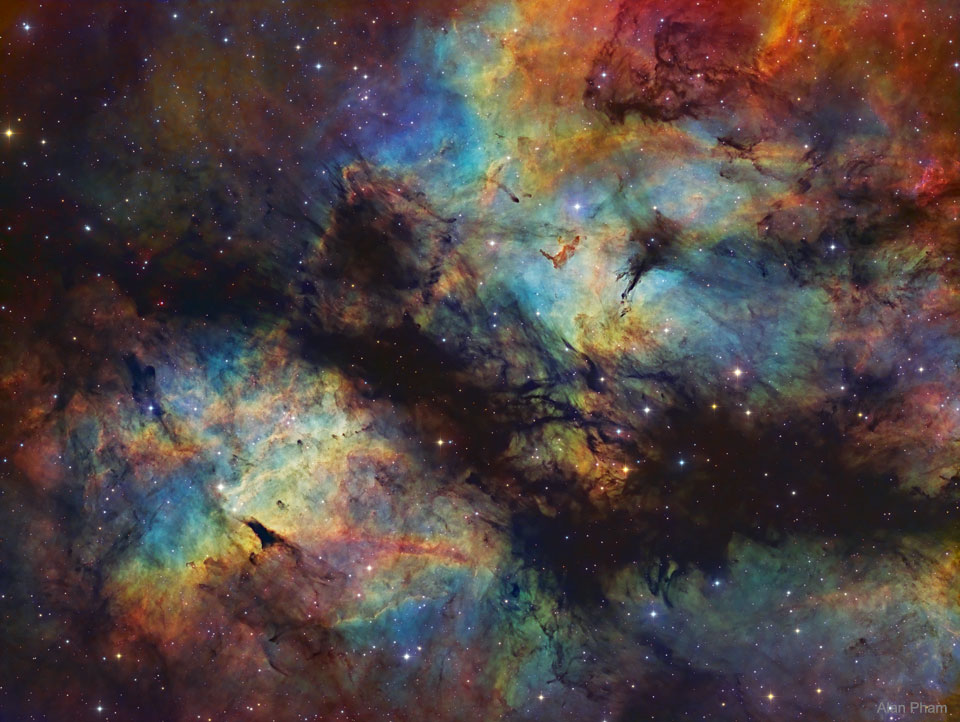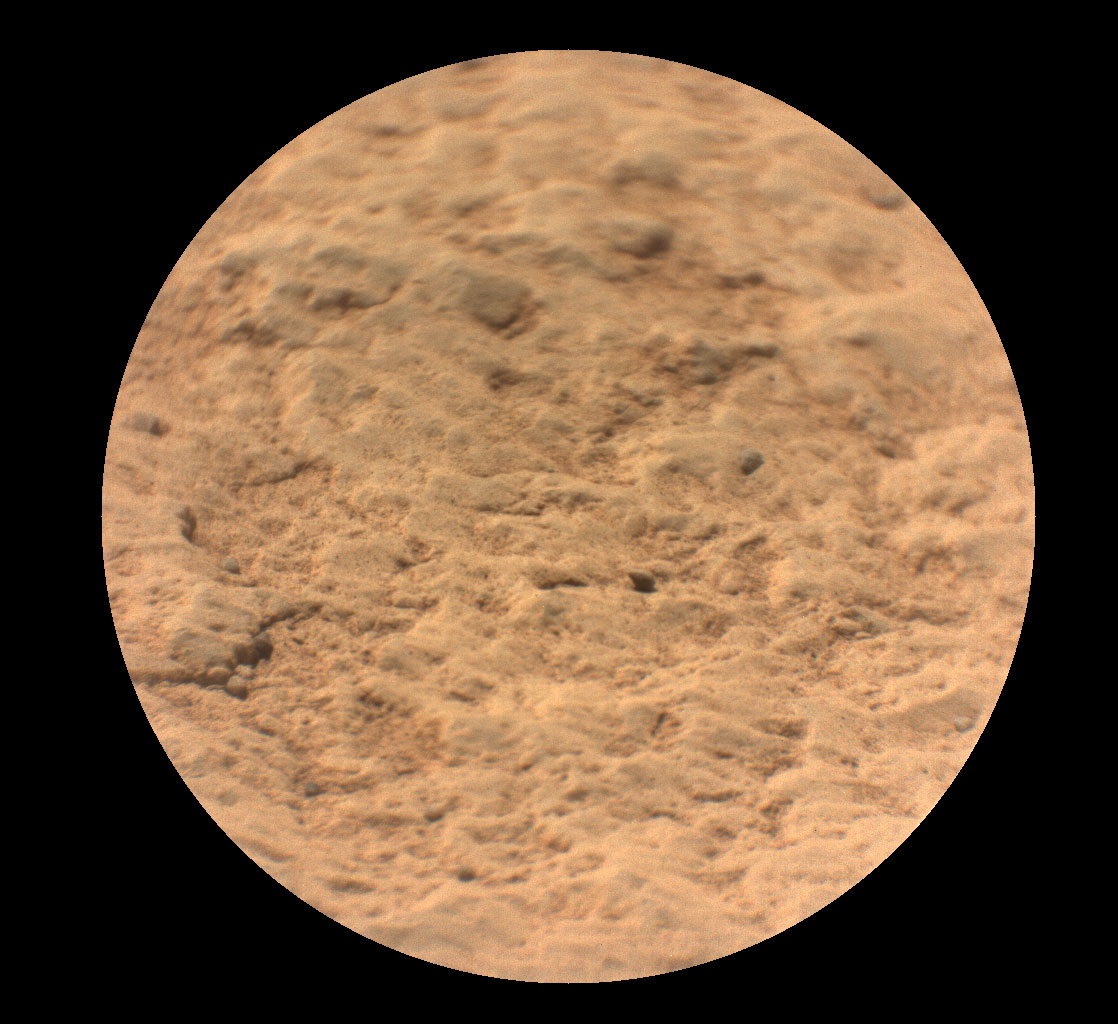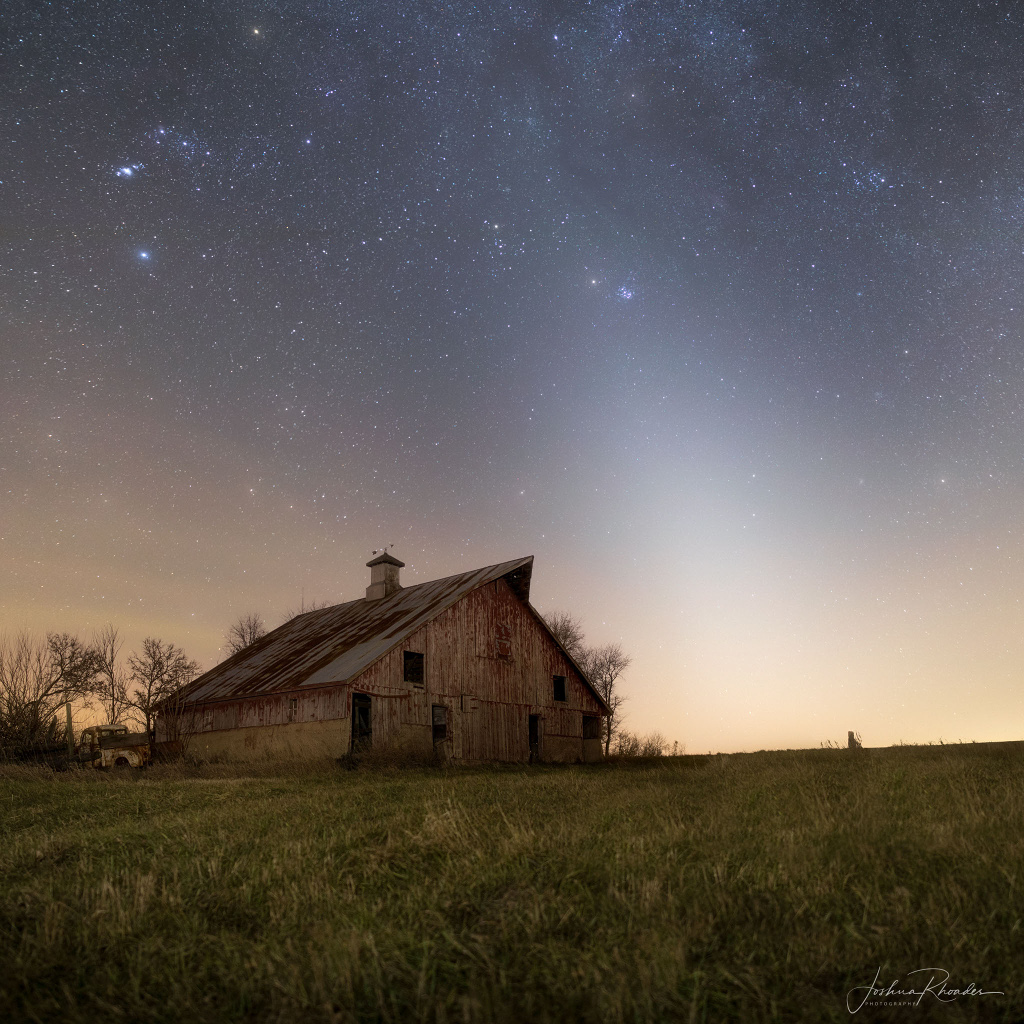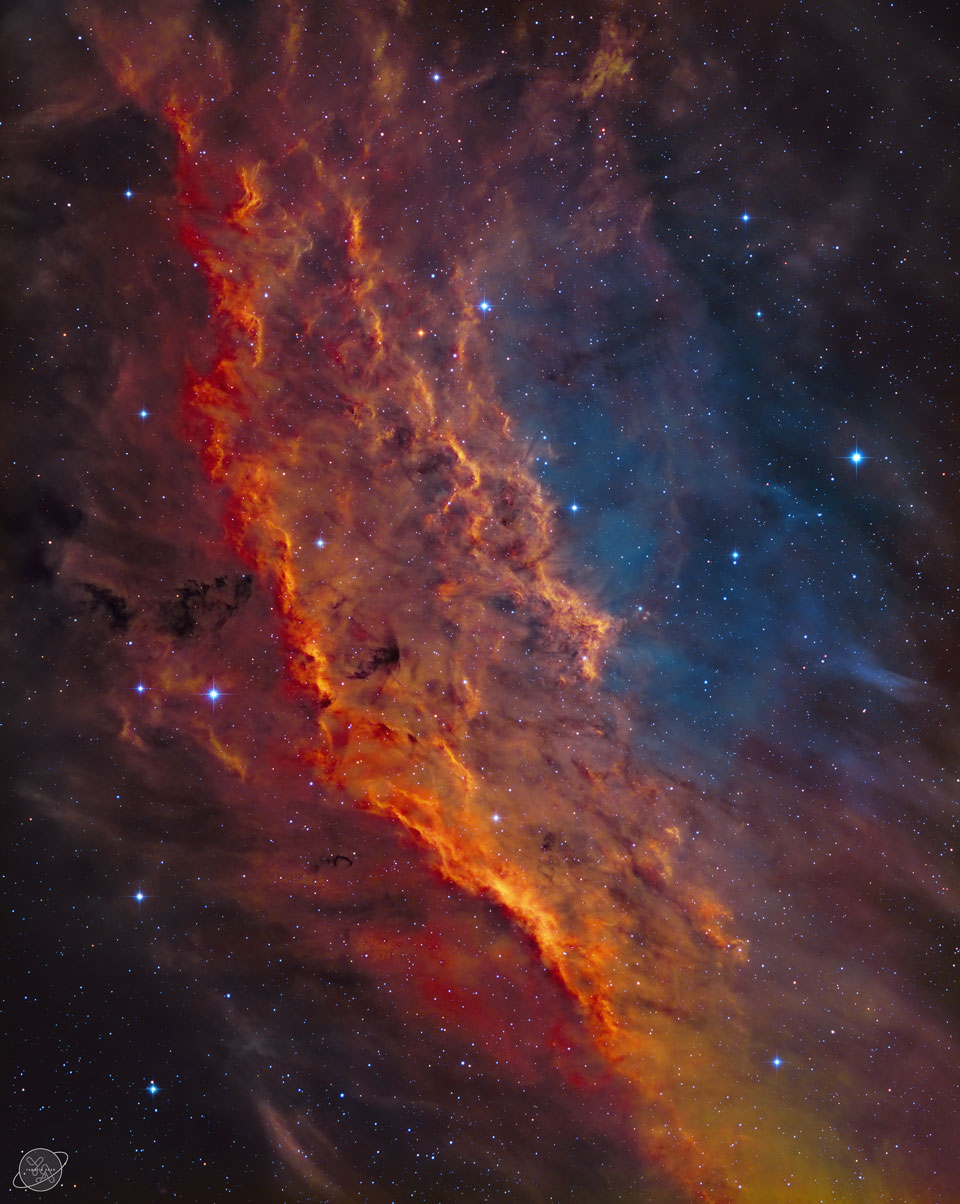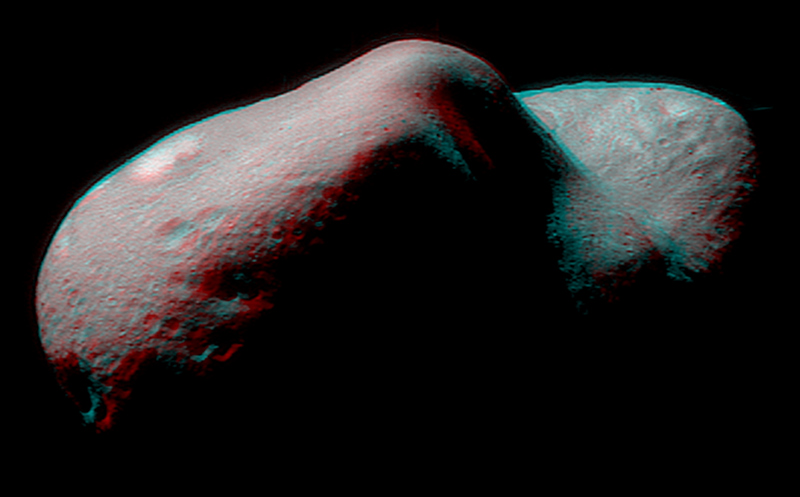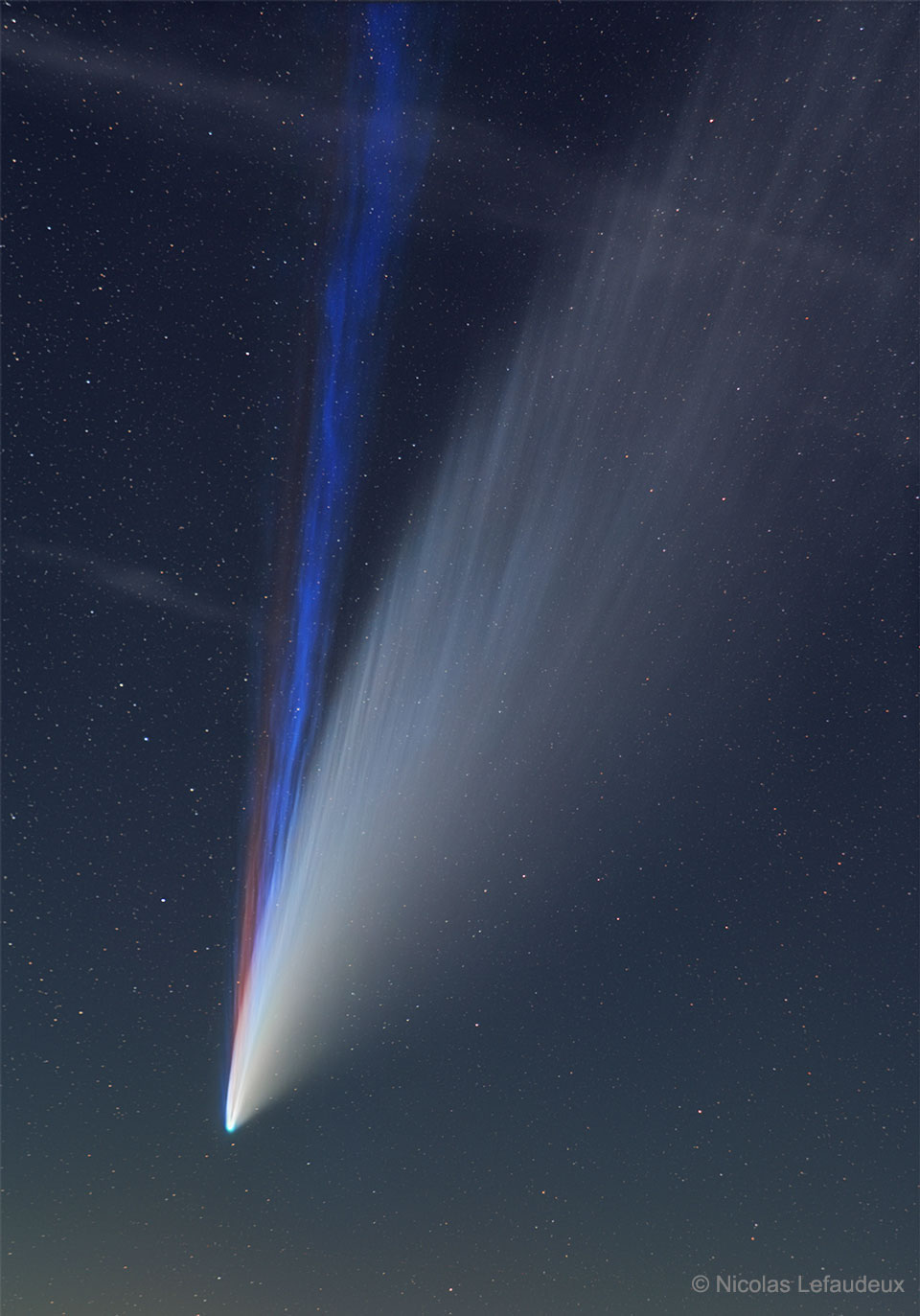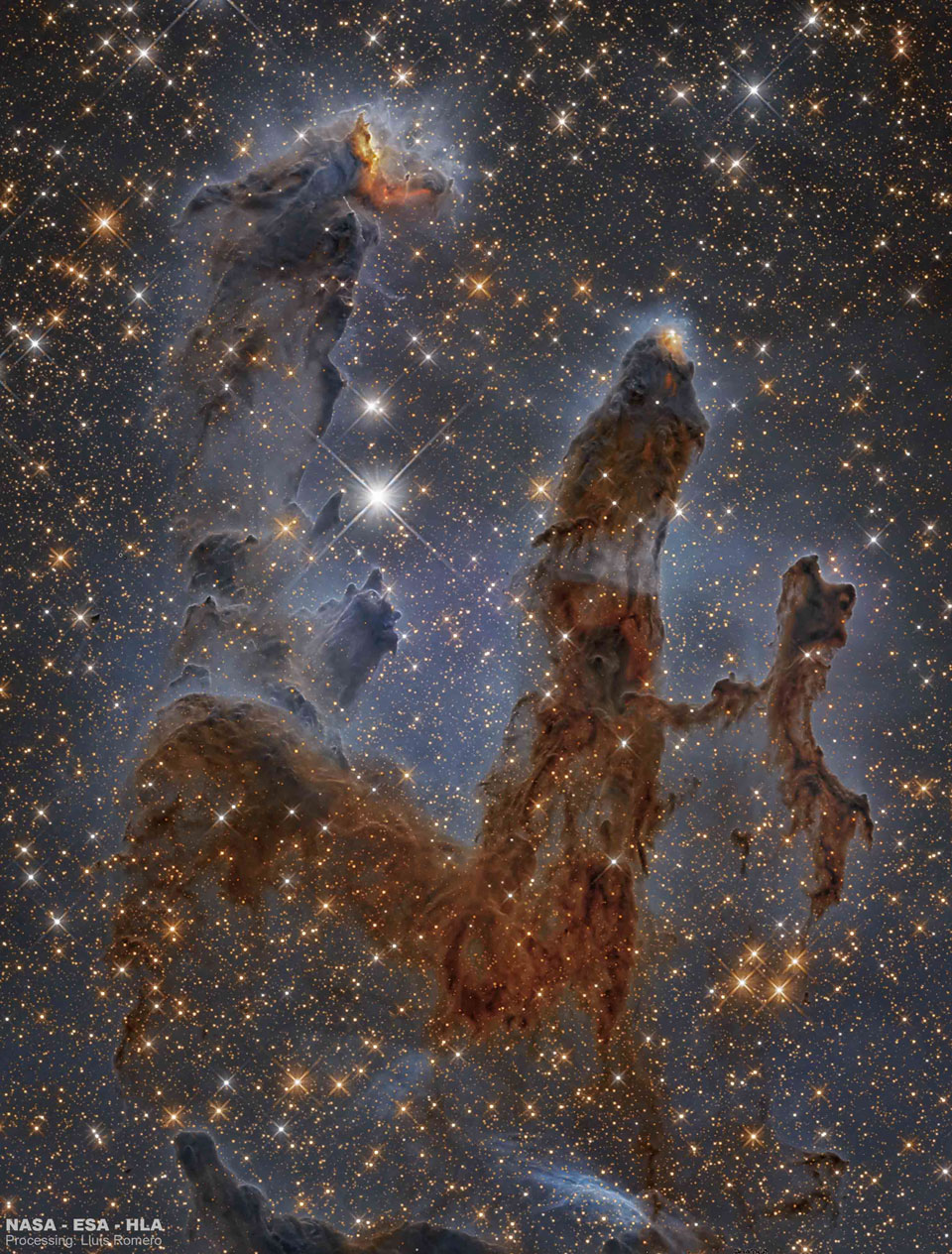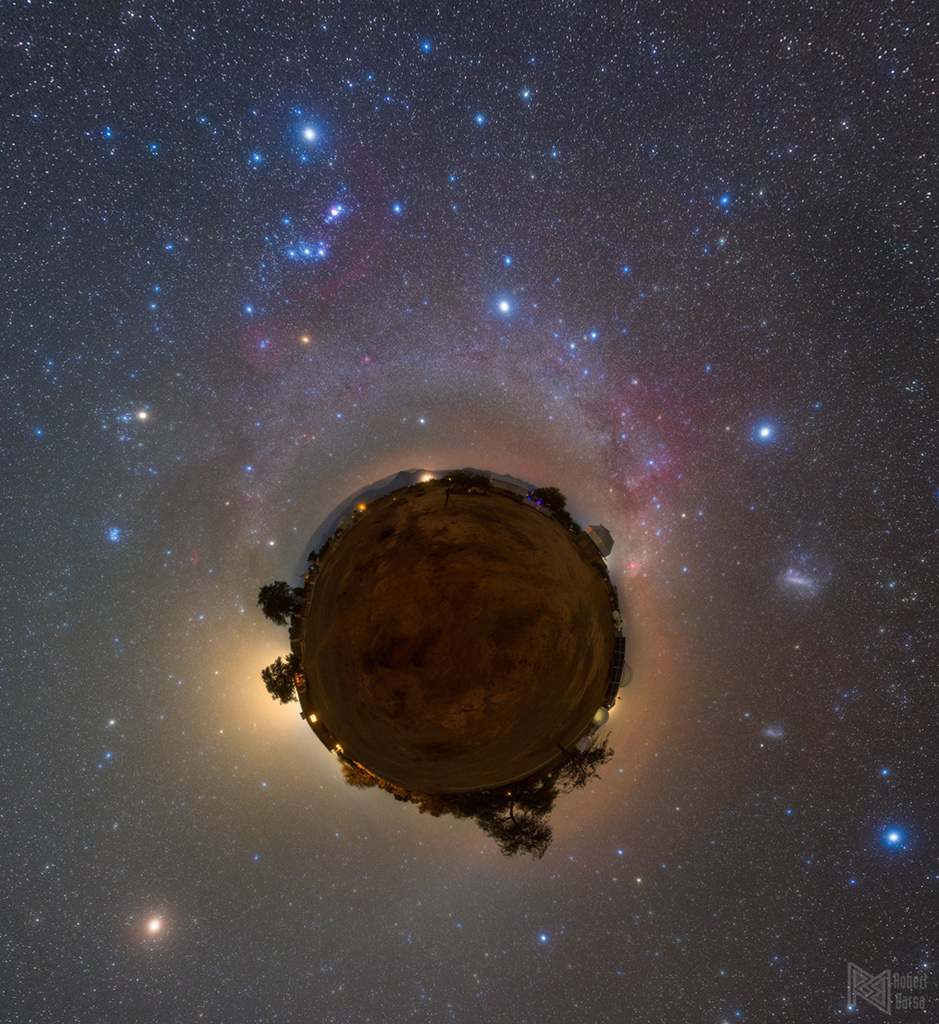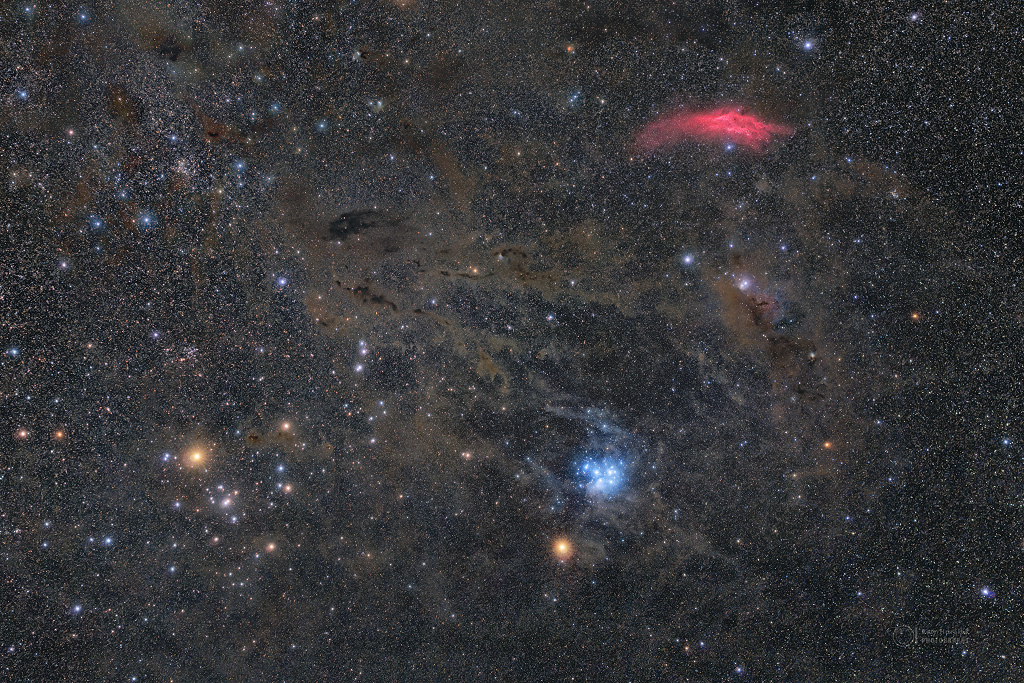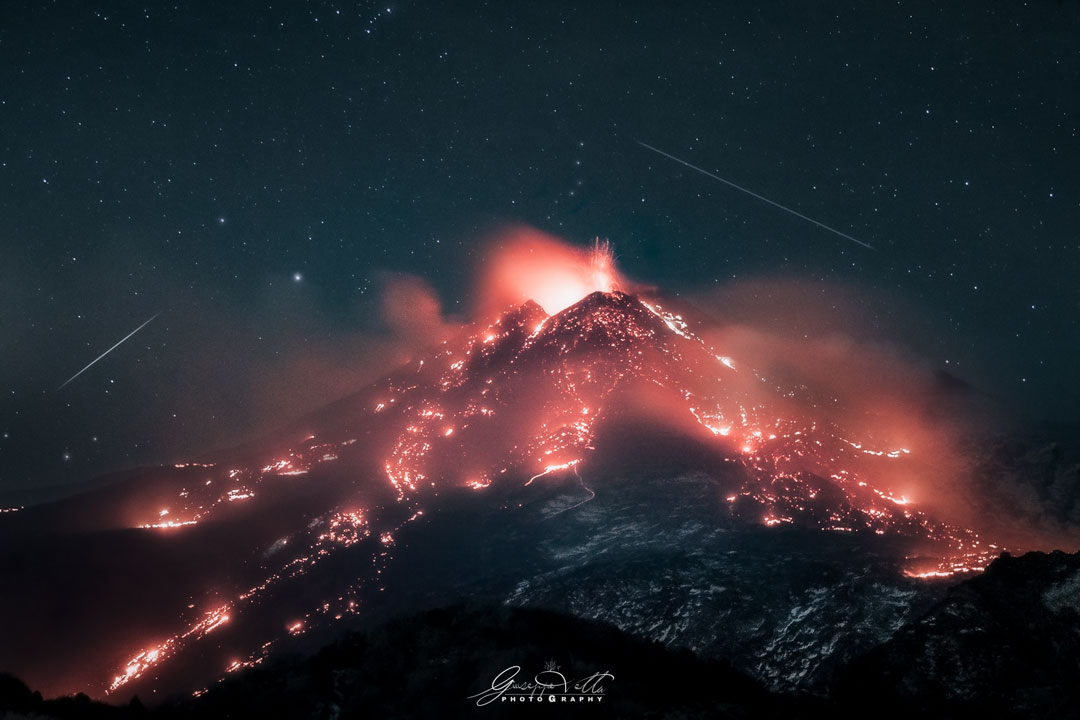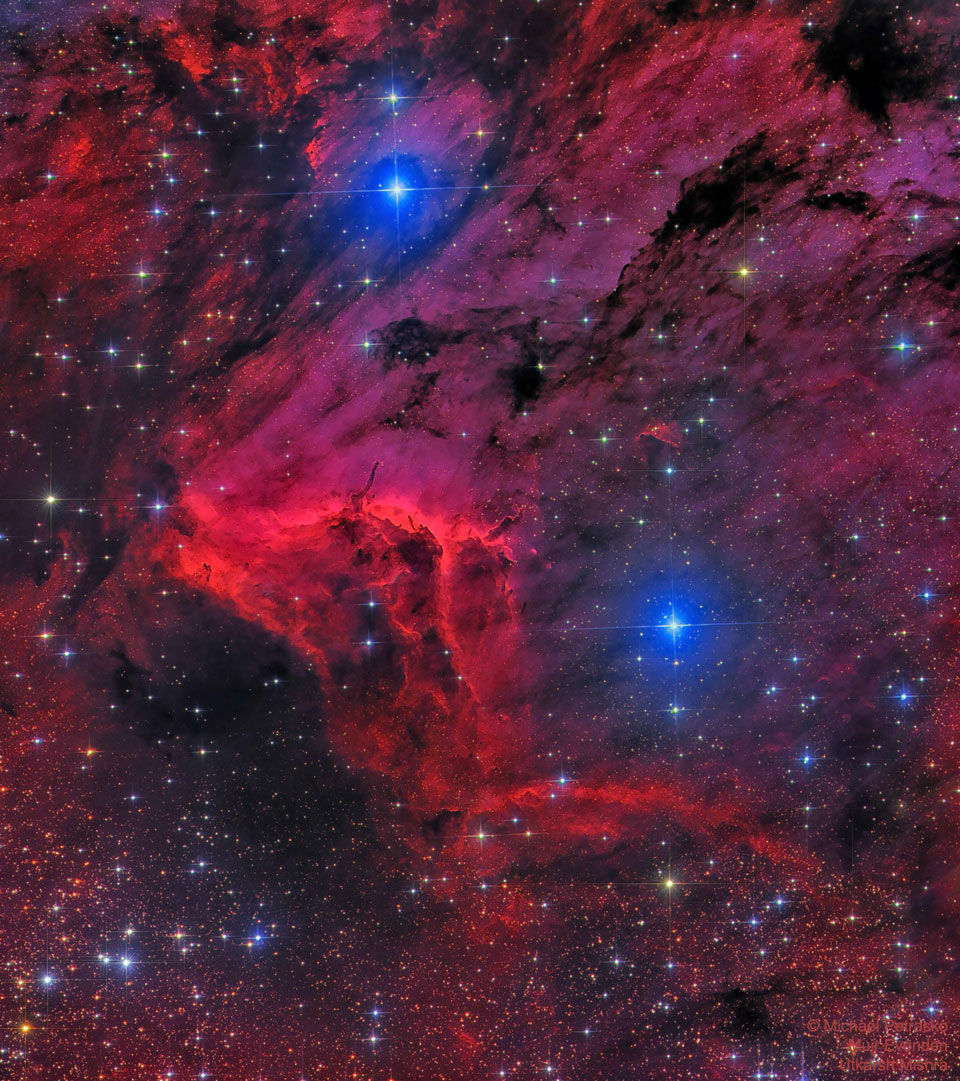2021 March 31
Image Credit: Event Horizon Telescope Collaboration; Text: Jayanne English (U. Manitoba)
Explanation: To play on Carl Sagan’s famous words "If you wish to make black hole jets, you must first create magnetic fields." The featured image represents the detected intrinsic spin direction (polarization) of radio waves. The polarizationi is produced by the powerful magnetic field surrounding the supermassive black hole at the center of elliptical galaxy M87. The radio waves were detected by the Event Horizon Telescope (EHT), which combines data from radio telescopes distributed worldwide. The polarization structure, mapped using computer generated flow lines, is overlaid on EHT’s famous black hole image, first published in 2019. The full 3-D magnetic field is complex. Preliminary analyses indicate that parts of the field circle around the black hole along with the accreting matter, as expected. However, another component seemingly veers vertically away from the black hole. This component could explain how matter resists falling in and is instead launched into M87’s jet.
